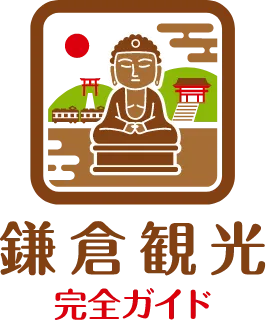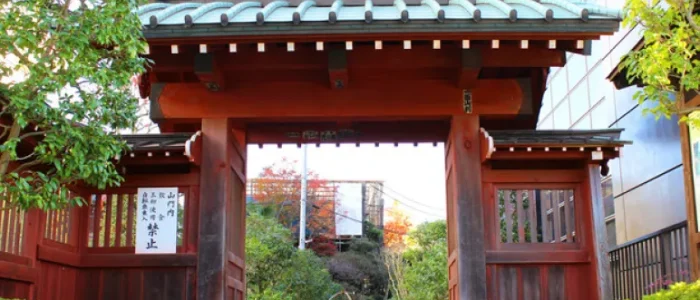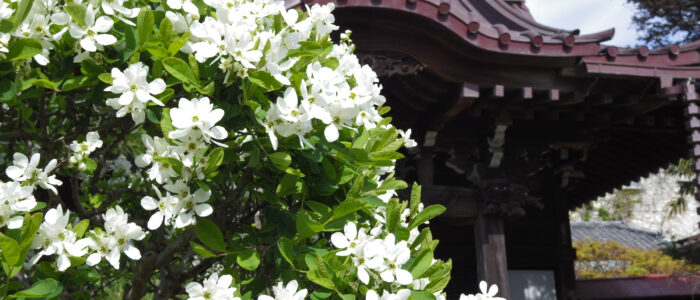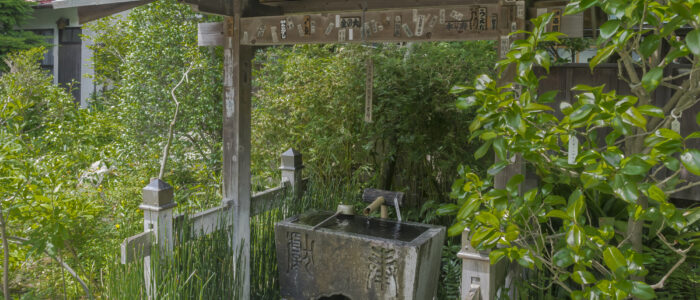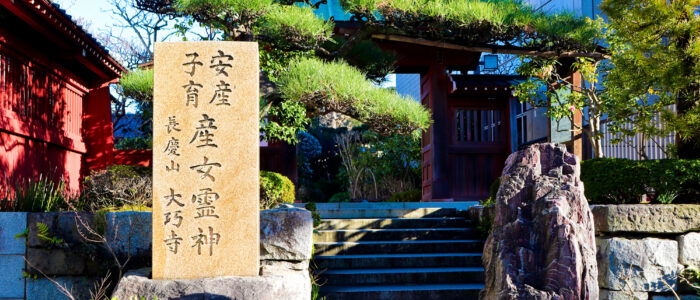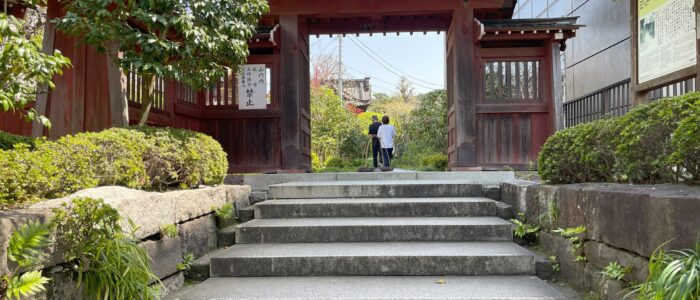Daigyo-ji Temple (大巧寺)
Discover Daigyo-ji Temple (大巧寺)
Just a 3-minute walk from Kamakura Station (鎌倉駅), Daigyo-ji Temple is a peaceful Nichiren Buddhist temple situated along Wakamiya-oji Avenue (若宮大路), on the way to Tsurugaoka Hachimangu Shrine (鶴岡八幡宮). Known affectionately as “Onmesama,” it offers comfort and spiritual support to expecting mothers and their families.
The temple traces its roots to the late 12th century, when it was a Shingon temple called “Daigyo-ji” located on the estate of Kajiwara Kagetoki (梶原景時), a warrior of the Kamakura Shogunate (鎌倉幕府). After Minamoto no Yoritomo (源頼朝) held a military meeting there and achieved victory, the temple was renamed “Daigyo-ji” to signify “skillful victory.” It was later converted to the Nichiren sect in the late 13th century and moved to its current location in the early 14th century.
What Makes It Special: Scenery, Architecture, and Nature
Daigyo-ji Temple is also renowned as a “flower temple.” Its compact but well-maintained grounds are vibrant year-round, especially with its impressive collection of rare camellias. Plum and quince bloom in spring, hydrangeas and agapanthus in early summer, and Japanese anemones and sacred bamboo in autumn and winter.
Each plant has a name tag, making the experience accessible even for those unfamiliar with botany. The temple’s tidy layout and tranquil ambiance make it a perfect place to admire seasonal beauty.
Spiritual Blessings and Cultural Significance
In the early 16th century, the fifth chief priest Nitto (日棟) enshrined the spirit of a woman who had died during childbirth. She became known as Ubume Reijin (産女霊神) and worship surrounding her evolved into today’s “Onmesama” devotion. This helped establish Daigyo-ji as a beloved destination for safe childbirth prayers.
As an independent temple with no parishioners, it is open and welcoming to all visitors, embodying both community faith and traditional Japanese Buddhism.
Charms of Omikuji and Unique Rituals
The temple offers special omamori (charms) for safe childbirth, containing a talisman called Himyofu (秘妙符). Inside is a symbol: a red goldfish indicates a girl, a white helmet a boy. This gender divination is famously “accurate” and offers a playful, memorable cultural moment for families.
After birth, families return for oreimairi (御礼参り, a gratitude visit), during which they share the baby’s name and receive a child-rearing charm—a touching tradition that continues the temple’s support of family well-being.
Access and Opening Hours
Daigyo-ji is just a 3-minute walk from the East Exit of JR Kamakura Station (鎌倉駅). The gate on the Wakamiya-oji Avenue (若宮大路) side is technically the rear entrance, but is the most convenient for visitors coming from the station. Vehicles must use the front gate on Komachi Main Street (小町通り).
There is parking for 12 vehicles. The temple is open daily from 9:00 AM to 5:00 PM. Admission is free (donations appreciated), and omamori and blessings are offered during these hours. Seasonal variations may apply, so checking ahead is recommended.
Best Time to Visit
Spring through early summer is the best time to visit for floral beauty, especially during the camellia and agapanthus blooms. For those seeking a more tranquil visit, avoid dog days and auspicious days like taian (大安), when the temple becomes busy from early morning.
Guests at Tosh’s Place (トシズプレイス)—a fully unmanned, kitchen-equipped accommodation—can take advantage of quiet early mornings and enjoy the calm temple grounds right at opening time.
Nearby Attractions Within Walking Distance
Daigyo-ji is about 10 minutes on foot from Tsurugaoka Hachimangu Shrine (鶴岡八幡宮). Other attractions within walking distance include Hongaku-ji Temple (本覚寺), the Kamakura Museum of National Treasures (鎌倉国宝館), and the Kamakura Carving Museum (鎌倉彫資料館).
The nearby Komachi Main Street (小町通り) and Wakamiya-oji Avenue (若宮大路) are lined with sweet shops, cafés, and souvenir stores—perfect for a post-visit stroll or snack.
Recommended For
- Expecting parents and their families seeking safe childbirth prayers
- Flower and nature lovers who enjoy seasonal gardens
- History enthusiasts curious about Kamakura’s medieval past and Nichiren Buddhism
- Travelers seeking quiet breaks between busy sightseeing
- Long-stay guests at Tosh’s Place (トシズプレイス) who want to enjoy early or late-day serenity
Wrap-Up: The Charm of Daigyo-ji Temple and Your Stay at Tosh’s Place
Daigyo-ji blends the blessings of safe childbirth with the quiet beauty of seasonal flowers. Despite being near Kamakura Station (鎌倉駅), it offers a tranquil escape from the tourist bustle, where visitors can slow down and reconnect with nature and tradition.
Staying at Tosh’s Place (トシズプレイス) allows you to visit during the calm of morning or explore Kamakura’s quiet streets by evening. Experience a stay that feels like living in the city, and let Daigyo-ji’s peaceful presence become part of your journey.me part of your journey.
